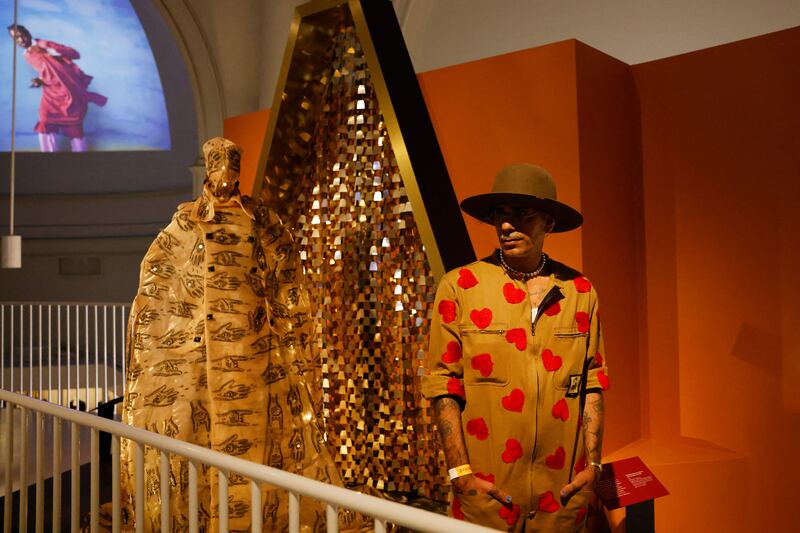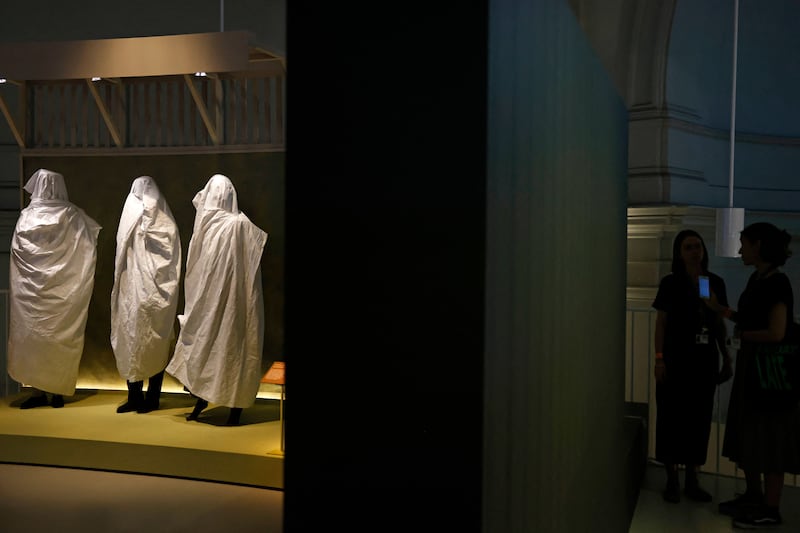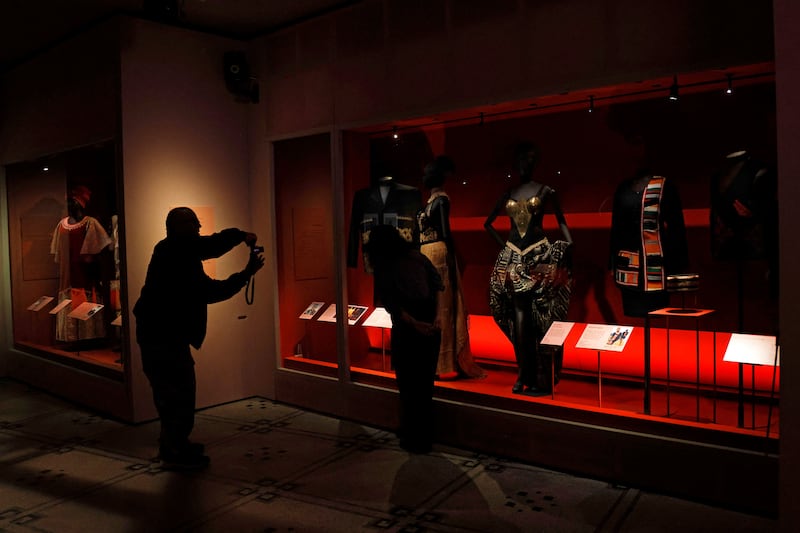At the entrance to the new Africa fashion exhibition in London’s Victoria and Albert Museum is a message from curator Christine Checinska. “Since 1852, the V&A has sought to showcase the very best in art and design,” she wrote. “Yet African creativity has been largely excluded, or misrepresented, owing to the historic division between art and ethnographic museums arising from our colonial roots and embedded, racist assumptions.”
The new exhibition, which opens on Saturday and will run until April 2023, is “landmark”, says V&A director Tristram Hunt at an advance showing. “This long overdue showcase … is consciously celebrating the genius of African creativity in all its diversity and ingenuity.”
Clothing, photography, albums, magazines, other fashion-related objects and testimonies from more than 20 African countries are on display across two floors, in a collection that celebrates the diversity of the continent’s fashion and culture from the 1950s — shortly before most African countries achieved independence — to the present day.
There are tributes to designers: Morocco’s Naima Bennis, born in 1940, who created elegant evening cloaks; Nigeria’s Shade Thomas-Fahm, who ran boutique Maison Shade in Lagos in the 1960s; Mali’s Chris Seydou, born in 1949, who brought bògòlanfini, a handmade cotton cloth dyed with fermented mud, to international runways; or Ghanaian pan-Africanist Kofi Ansah, born in 1951, who was said to have been inspired by Japanese kimonos, telling his children: “West isn’t always best.”
There are reminders of the role fashion has played in Africa’s politics, such as in 1957, when then Ghanaian prime minister Kwame Nkrumah wore kente cloth to announce his country’s independence from British control.
More recent moments are included, too, such as an ornate gold suit worn by Nigerian music superstar Burna Boy (whose real name is Damini Ebunoluwa Ogulu) to the 2020 Grammy Awards.


Present are several featured designers, who are grateful for the attention the exhibition will bring to their work, but also question why it has taken so long for such an event to be staged.
“It was way overdue,” says Nigerian stylist and designer Bubu Ogisi, laughing. “It’s a cool way to decolonise the museum. This is just the start.” Her IAMISIGO label is based between Lagos, Nairobi and Accra.
Ogisi says her pieces have been featured in ethnographic museums in Germany and other parts of the world. Any showing creates more awareness of what African designers are doing, she adds. “This should have been done maybe five years ago but time always heals everything.”
In a speech, curator Checinska says the exhibition is the result of dozens of conversations with creators. “There are of course many ways to be fashionable and African,” she says.
Aisha Ayensu, creative director of Ghanaian luxury fashion label Christie Brown, which has two pieces on display, praises the exhibition as “well thought out and very well put together”, and appreciates that the museum took the time to “do it properly and tell our stories in the right way”.
“It’s an exciting time; this is history in the making,” says Ayensu. “We hope it’s not some sort of a fad or a trend. It’s entrenching the position of African fashion. It’s creating an awareness of the multitude of brands that exist already, and hopefully it opens doors in terms of how we can merge with the rest of the world … not just with inspiration but with commerce.”


“I’m so happy to be here. It’s an honour,” says designer Alphadi, who was born Sidahmed Seidnaly and is based in Niger. “Africa is a continent, Africa is not a town,” he emphasises, standing beside a display of his work, which features kuba cloth made from woven raffia. “The time is coming for Africa … We have fashion, beauty is there, and we are supposed to promote that.”
The 65-year-old, who started his label in the 1980s, founded Fima, the International Festival of African Fashion, in 1998. Its next iteration will take place in Niger this December, and Alphadi is inviting European and American designers to attend and to exhibit their work together.
The V&A Africa Fashion exhibition has also seen the museum produce a 224-page book, for which American-British playwright has penned a prologue. Africa fashion “is agency at its highest because it creates a future in which African people are not defined by anyone except ourselves,” Greer writes.











